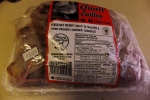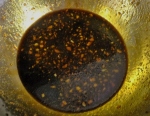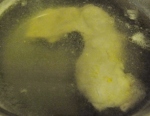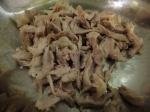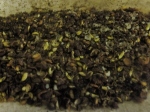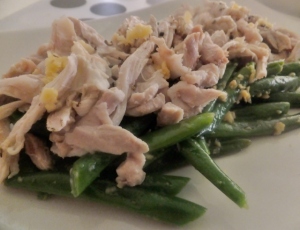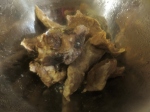 2014 is dedicated to the diligent practice of the martial arts. The love of learning traditional fighting systems remains to be an enigmatic artifact that have persistently followed me almost all my life; like a dark shadow lurking behind. It never left, and I think it wouldn’t so in the next 30 more years. It’s a hobby that I have loved and have endured almost a third of my life. It’s a journey into the sometimes unknown and unforgiving battles within these make shift gymnasiums and dojos. I got injured. I was deprived of information bounded by strict traditions, but never let-up.
2014 is dedicated to the diligent practice of the martial arts. The love of learning traditional fighting systems remains to be an enigmatic artifact that have persistently followed me almost all my life; like a dark shadow lurking behind. It never left, and I think it wouldn’t so in the next 30 more years. It’s a hobby that I have loved and have endured almost a third of my life. It’s a journey into the sometimes unknown and unforgiving battles within these make shift gymnasiums and dojos. I got injured. I was deprived of information bounded by strict traditions, but never let-up.
I learned my fundamentals the hard way in these rudimentary and creepy atmosphere back in the 80s. I went as far as Manila’s Chinatown; taking the jeepney and walking the dangerous and dark streets of Doroteo Jose and Quiapo to learn a particular art. Those places were rampant for pickpockets, drunk and boisterous bystanders, hookers, crack and rugby users, and whatever else one can imagine. All these hardwork have finally paid-off. Took me more than a decade (and still learning) and through this martial journey met some new friends and brothers in the arts whom I would treasure all throughout my life.
Before blogging, I wrote with a martial arts magazine called RAPID Journal. That was the beginning of my passion for writing and interpreting the martial arts. It was as provocative and as enthusiastic as food writing. I continue my communication with this group to this day whenever I visit Southeast Asia and every visit feels like I was never gone; and every training is as refreshing and as awakening as fresh cold water in a hot summer’s day.
I am for martial tradition, and it shall remain that way. I don’t do it for sports, for trophies or cash, tournaments or ring fights nor for some religious beliefs attached to its foundation. I have fervent wish to pass them on someday. My training is for cultural cultivation and preservation of the arts and health. These, in my belief, are cultural artifacts meant to be appreciated and loved. It’s also a form of training in which I can clear my mind and see clarity towards a life’s path and to whatever challenges I may face in the future. It’s a difficult process: learning, re-learning and practicing and doing the same over and over again. That’s the challenge I enjoy facing (and getting whacked while doing them). Moreover, I meet new people along the way, and that’s another facet of training; a social interaction with people of the same interest and passion.
This dish somehow took me back to an era when I was still beginning my martial training. I was fervently reminded of those Chinese banquet celebrations where Roasted Pigeons were served to start. I love those pigeons, and sometimes, when I’m invited into a Chinese banquet for New Year’s, Wedding or Grand Celebrations in the Martial World, I would munch and gobble-up the pigeon plate. Many Filipino-Chinese, I noticed, went for the more expensive fish and beef entrees. I went for the bird. They had probably thought I was queer, but the smokiness combined with the sweet smelling and crispy gamy skin from the roast lingered throughout the night or day. The salt was the kicker.
I know it’s special and I can never cook it myself. These quails are Vietnamese by nature and I’ve only cooked this once before. It involves so much preparation despite the simple cooking procedures and steps.
Ingredients:
- A pack of Quails
- Honey
- Light Soy Sauce
- Dark Soy Sauce
- Sesame Oil
- Patis
- Brown Sugar
- Ground Black Pepper
- Garlic, minced to a paste
- bunch of skewers (soaked overnight)
Split the quail down the backbone and rinse off the cavities with running cold water. Discard the neck bones, and lay them flat on the cutting board. Cut the skewers in half and pierce the quails from the legs to the neck to form an X.
Prepare the marinade. Whisk all ingredients in a mixing bowl and adjust to taste. Marinade the quails overnight.
Set the quails on a roasting pan and bake them in a pre-heated oven at medium-high or heat until the skin caramelizes. Baste the quails with the marinade every so often to prevent them from drying. Flip the quails three-fourths of the way to cook the other side.
Dipping Sauce:
- Lime Juice
- Garlic, minced
- Sugar
- Thai Chilis
- Patis
ahref=”http://pictureclusters.blogspot.com/”>Food Friday</a><a title=”FoodTripFriday” href=http://www.foodtripfriday.net target=”_blank”><img title=”FTFBadge” src=”http://img.photobucket.com/albums/v358/fickleminded/FTF.png” alt=”FTFBadge” width=”250″ height=”125″ />
